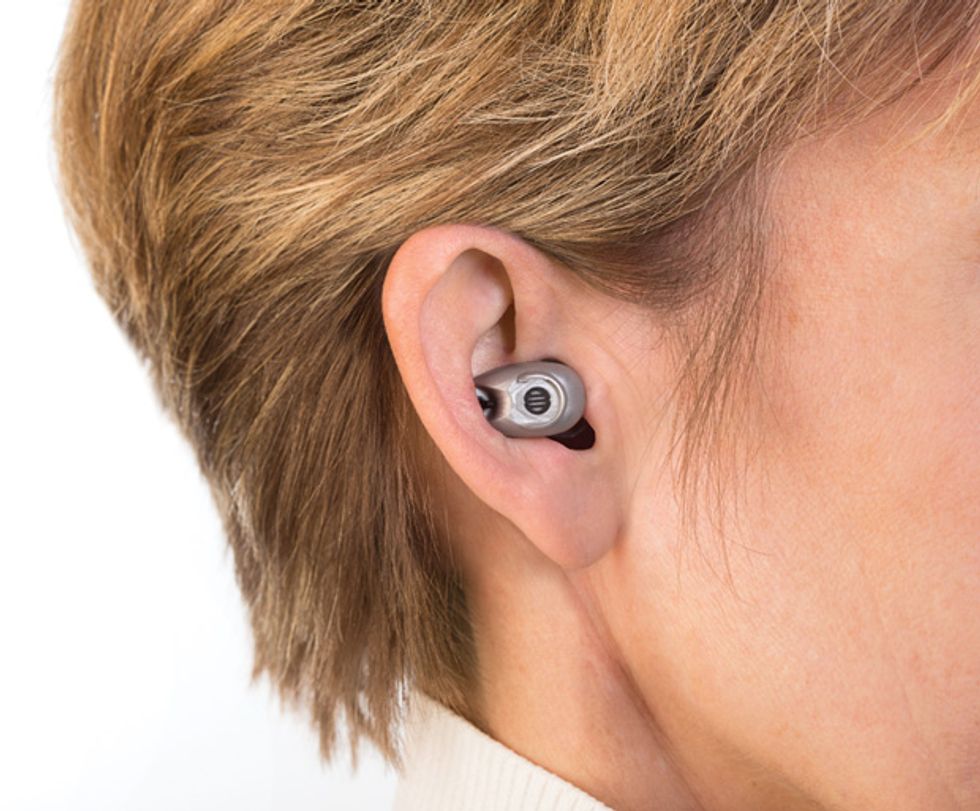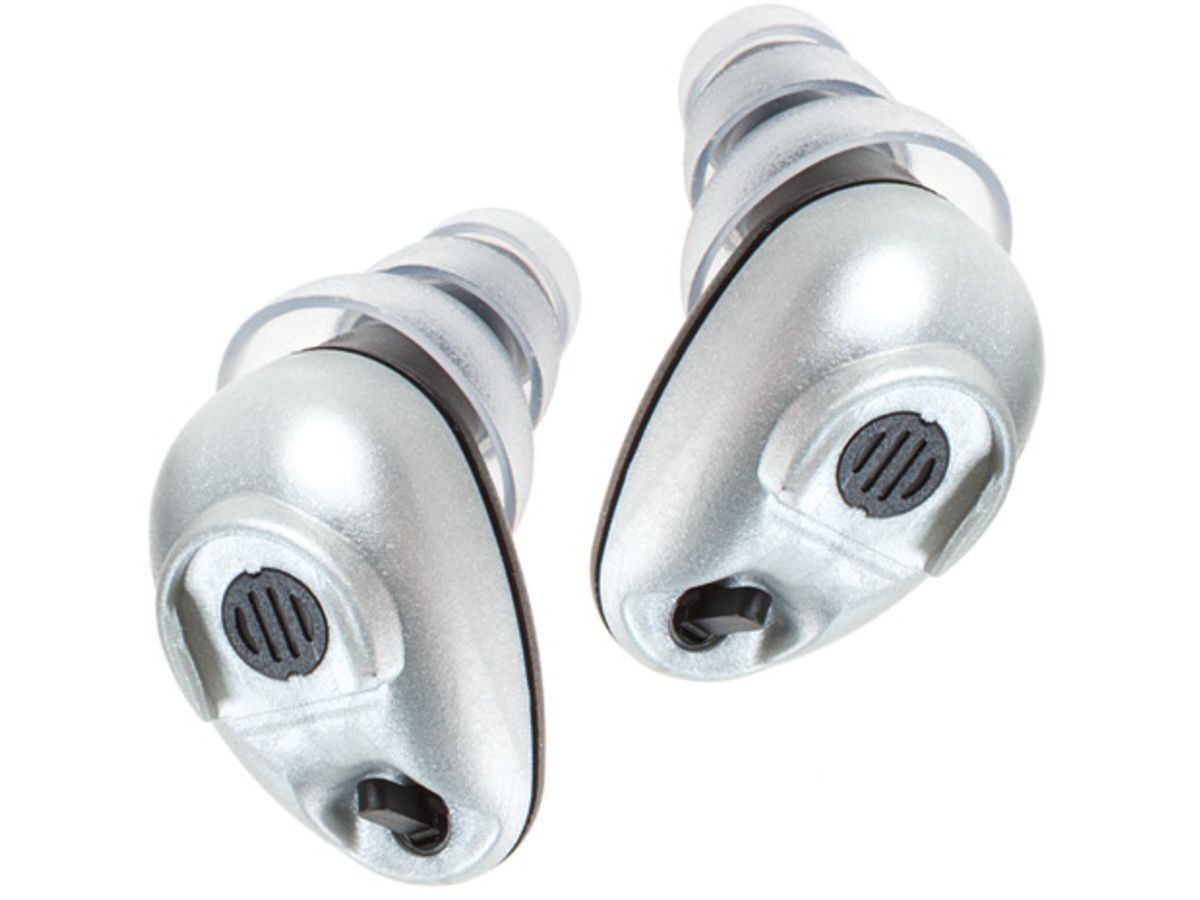For those over 40, it’s not unusual to begin to find it difficult to see nearby objects. But many can avoid—at least for a while—the hassle and expense of prescription lenses by buying a pair of cheap off-the-rack reading glasses from a drugstore. Hearing declines with age as well, but unlike with vision there hasn’t traditionally been good intermediate technological assistance between simply turning up the TV volume and getting a hearing aid, which can cost US $4,000 and up.
In recent years, a number of companies have tried to step in to fill this niche with personal in-ear digital sound amplifiers that selectively boost the volume for the audio frequencies used in speech and do some ambient noise cancellation. There are also smartphone apps that use the phone’s microphone and send enhanced sound to your earbuds. Now Chicago-area Etymotic Research has entered the market with a different approach.
Etymotic’s Bean Quiet Sound Amplifier is the size and shape of a wireless earbud and costs $375 for one or $700 for a pair. It pays attention to volume as well as frequency, boosting both soft sounds and high-pitched sounds (human hearing inevitably degrades over time, with less and less sensitivity to high frequencies). Other sounds are passed through without amplification; very loud sounds (above 120 decibels) are not passed through at all. It can handle sounds from 50 hertz to 16 kilohertz, a wider range than most hearing aids.
The Bean is classified as a personal sound amplifier and not a hearing aid by the U.S. Food and Drug Administration, allowing it to be sold directly to consumers—the difference between the two being that personal sound amplifiers are intended for occasional use and not to treat a hearing impairment.

I’m not in the target market, at least not yet. But I was able to test a pair—and notice a difference—in several situations. The Bean’s plastic casing makes it light but also makes it feel fragile, although I didn’t have any durability problems. A switch that changes the maximum level of amplification from 15 dB to 23 dB was inaccessible when the gadget was in my ear—that is a bit frustrating. And the on-off toggle is a little too basic: To turn it off, you open the battery door, which can accidentally snap shut if you’re carrying it in a pocket.
Each Bean comes with a selection of tips for seating it properly in the auditory canal. The standard ones fit me fairly comfortably, and I’m someone who is rarely comfortable with earbuds. It was a little tricky to get them inserted at just the right depth: A tad too shallow and the devices whistle; a little too deep and the sound seems muffled.
The Beans’ effect was startling sometimes. I first put the pair in while walking through town on a busy street. Traffic noise was unchanged, but the sounds of unseen birds jumped dramatically: It felt like I had entered an aviary. In a movie theater, they were less useful; I had to terminate my test when the sounds of people four or five seats away munching popcorn turned out to be extremely annoying. In a noisy bar though, they lowered the overall din and helped me hear my friends’ conversations a little better when their volume dropped off and everybody else at the table started asking “What?”
I found the gadgets most useful when watching TV late at night. I try to avoid disturbing my noise-sensitive kids down the hall, and I was able to turn the TV down to a murmur and still easily follow the dialogue. There’s no standard for TV volume, but, for comparison, during the day I might have the volume control on my bedroom TV, about 5 meters from my head, turned to level 15; normally at night I might get it down to 11 or 12. With the pair of Beans it was fine at 6 or 7. Maybe I’m not so far off the target market as I thought.
This article originally appeared in print as “The Bean.”
